One of the most spectacular festivals in Sicily, the Archi di Pasqua (Easter Arches, also known as Bread Arches) draws thousands of people to the remote town of San Biagio Platani. When we were planning our trip to Sicily, a townswoman Magellan was exchanging emails with wasn’t certain the annual festival would proceed—the EU had cut funding. Days before we left Canada, she reported the townspeople were going ahead on their own.
Mistrusting our GPS, we drove for an hour and a half over hilly, bumpy roads to reach San Biagio Platani. As we expected, on the Wednesday after Easter the town wasn’t crowded with visitors and it was easy to take photos, ask questions and enjoy the ambience.
The first record of the Bread Arches is from 1776 but the tradition goes back to feudal times when Spanish rulers demanded ornate displays of welcome, such as arches carved from of marble and other precious stones. Being poor farmers, the people of San Biagio constructed their village’s arches from bread instead of marble. In those days the bread used in decorating the arches was edible, meant to feed the people. Later, the local diocese adapted the tradition, declaring a portion of each year’s harvest was to be used for the Bread Arches festival.
Over time it’s become a playful competition. The village splits into two rival groups, the Madunnara and the Signurara, to see who can create the most decorative archway using only natural materials and agricultural produce. Children and jubilados, professional craftsmen and shopkeepers, artists and farmers toil for months—a community project for ~3,700 residents to lessen the sting of the winter: long, cold, windy and cloudy.
Competitively, the teams create and embellish the arches, which become increasingly elaborate as they near the church in the town’s centre, the focal point of the Easter Sunday procession. The aesthetics change from year to year, but the arches and the route remain the same. Each team essentially creates “a gorgeous gallery, set up like a church with a façade, a nave, and an apse for the joyous reunion between the Virgin Mary and her son Jesus, after his resurrection.” The artistry is on display along the Corso Umberto until June 2.
Plans for the architecture and sculptured decorations are shrouded in secrecy, the artistry taking place in abandoned warehouses. Towering compositions are constructed from bamboo reeds, weeping willow, dried agave, asparagus, laurel leaves and rosemary. They are decorated with bread mosaics of pastine—a rice-shaped pasta, dried peas and beans and lentils in symbolic shapes such as peacocks, doves, angels, stars, palms and flowers, their bright colours symbolizing the triumph over winter. Columns crowned with capitals of bread alternate with decorative arches outlined in glossy laurel leaves and filled with oranges, lemons and dates.
One year a team created a delicate lattice of onion-shaped domes that rose thirty feet, like a scene from the Arabian Nights. Another time, thirteen mammoth breads displaying events from the Passion were sculpted; each bread eight feet high and requiring more than two-hundred pounds of flour. Bread has been shaped in the design of a Gothic cathedral with arches, columns, vaulting—even a rose window.
Although a salt dough like Play-Doh is used for the decorative breads, this is no easy-bake oven competition. It requires more than 1,800 pounds of oranges, 400 pounds of sugar and enough flour to make more than 10,000 pounds of decorative breads. (It can’t be that secret though as forklifts are needed to erect these monstrous archways and visitors can now participate in creating the arches.)
On the eve of Easter, townspeople gather at the unveiling to admire the illuminated arches and compare the work of the two teams. There are no prizes, but “popular consensus weighs heavily.”
Do you remember the decorative bread art that was popular in the 1970s? In San Biagio Platani, they are called cremati and hundreds of them in differing sizes and patterns are displayed for sale on tables in the piazza. My mother would love one of these I thought—she still had her vision at the time—so I bought one and to be sure it would survive the potholed backroads, I tucked it safely into the pouch behind the passenger’s seat of the car we had rented. Weeks later when we returned the car, I forgot all about it. I often wonder who found my cremati and where it is today.
In my diary I’ve written that Archi di Pasqua was created to help people in this hill town in the middle of nowhere forget their poverty. From looking at videos of festivals in past years, it’s clear that in 2018, the year we were there, the festival had been scaled back and there were fewer arches. We checked out the town’s website on which Archi di Pasqua is the first item—for 2019. On the Archi di Pasqua website, the 2020 festival is advertised, but ending earlier, on May 17. There is no mention of 2021. Is spring awakening in the Sicani Valley with the excitement of this ancient competition, the architecture of a winter? If not, will the community resurrect it next year?
Navigation
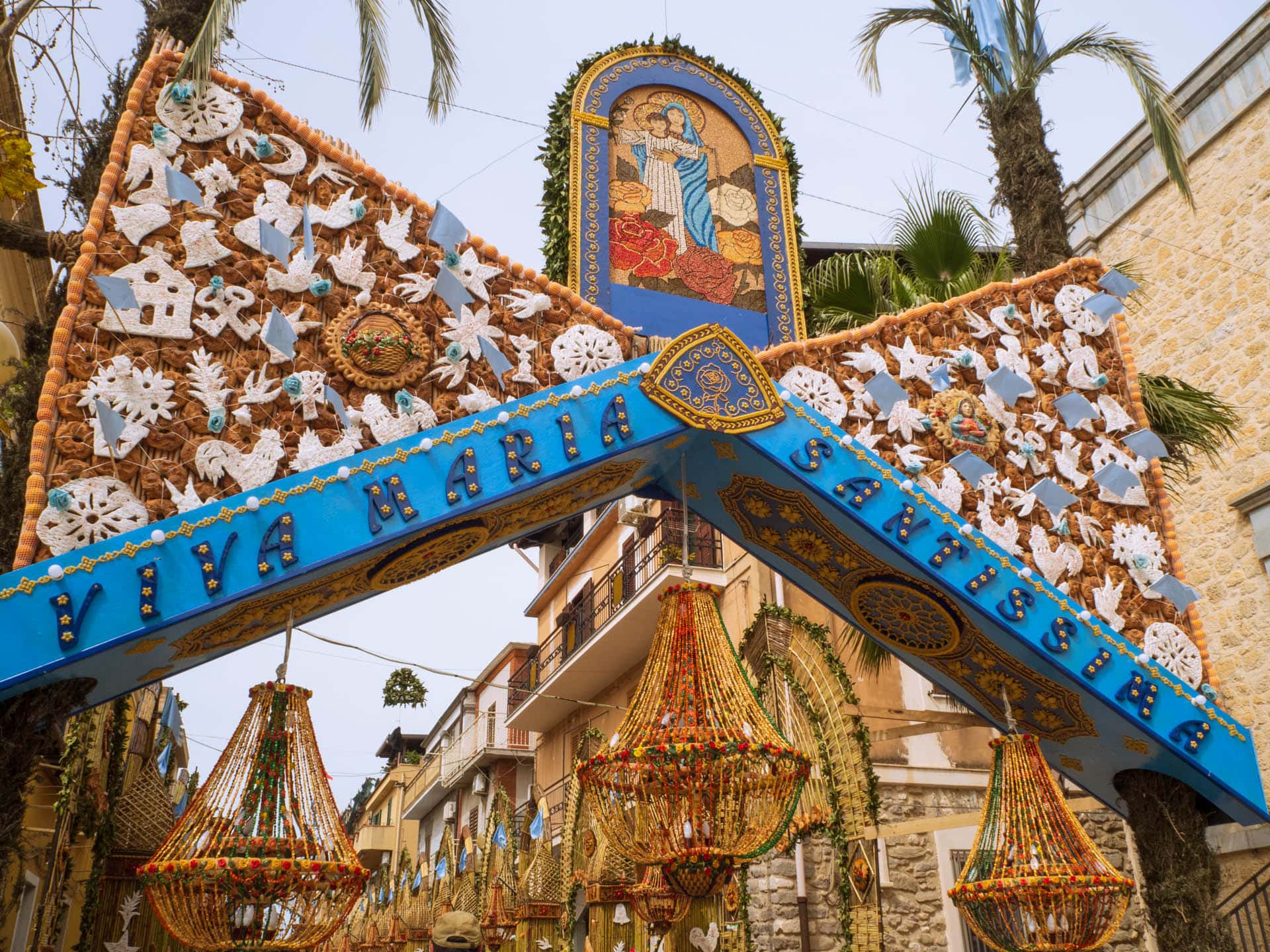

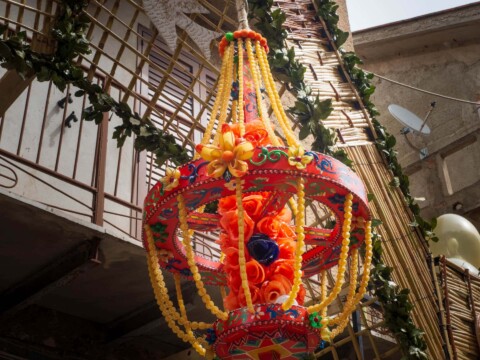
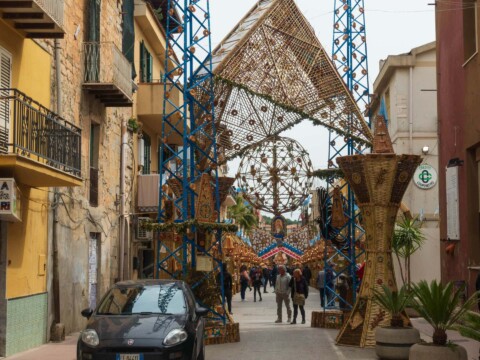


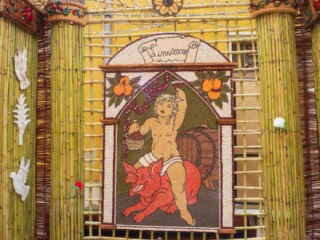



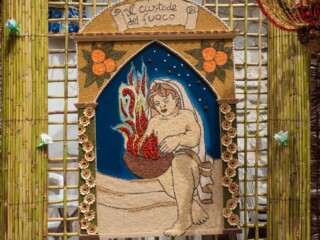
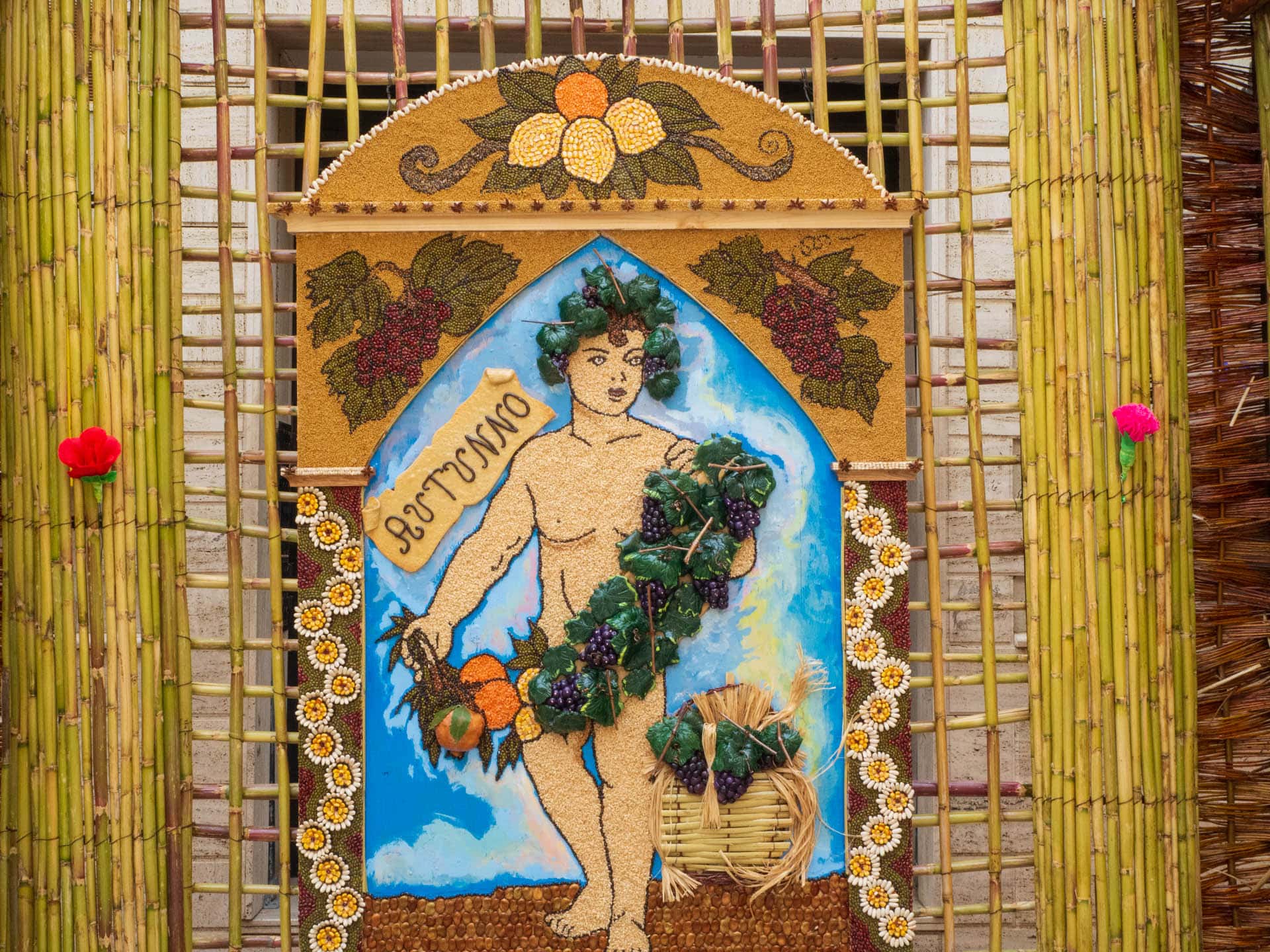

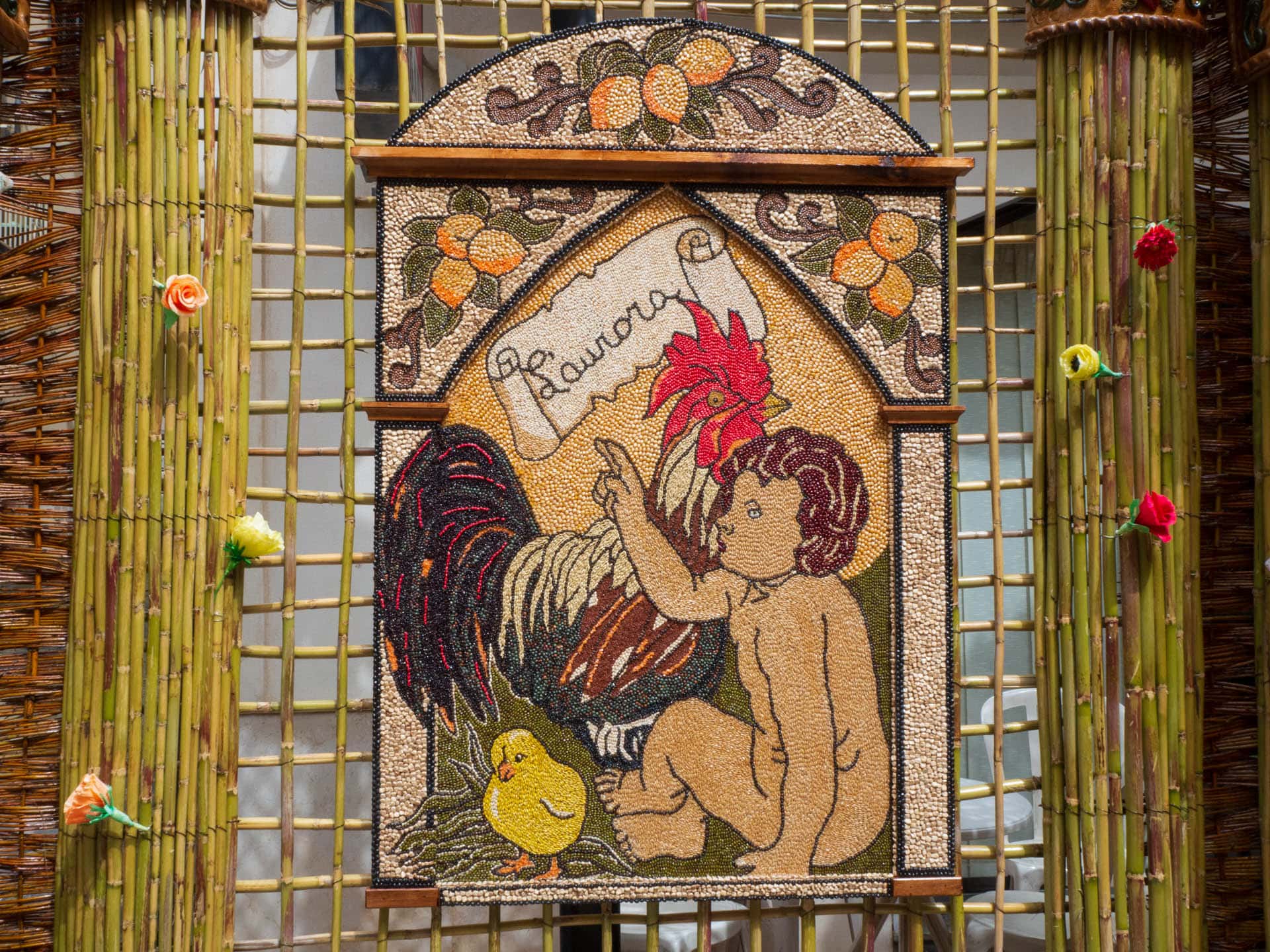


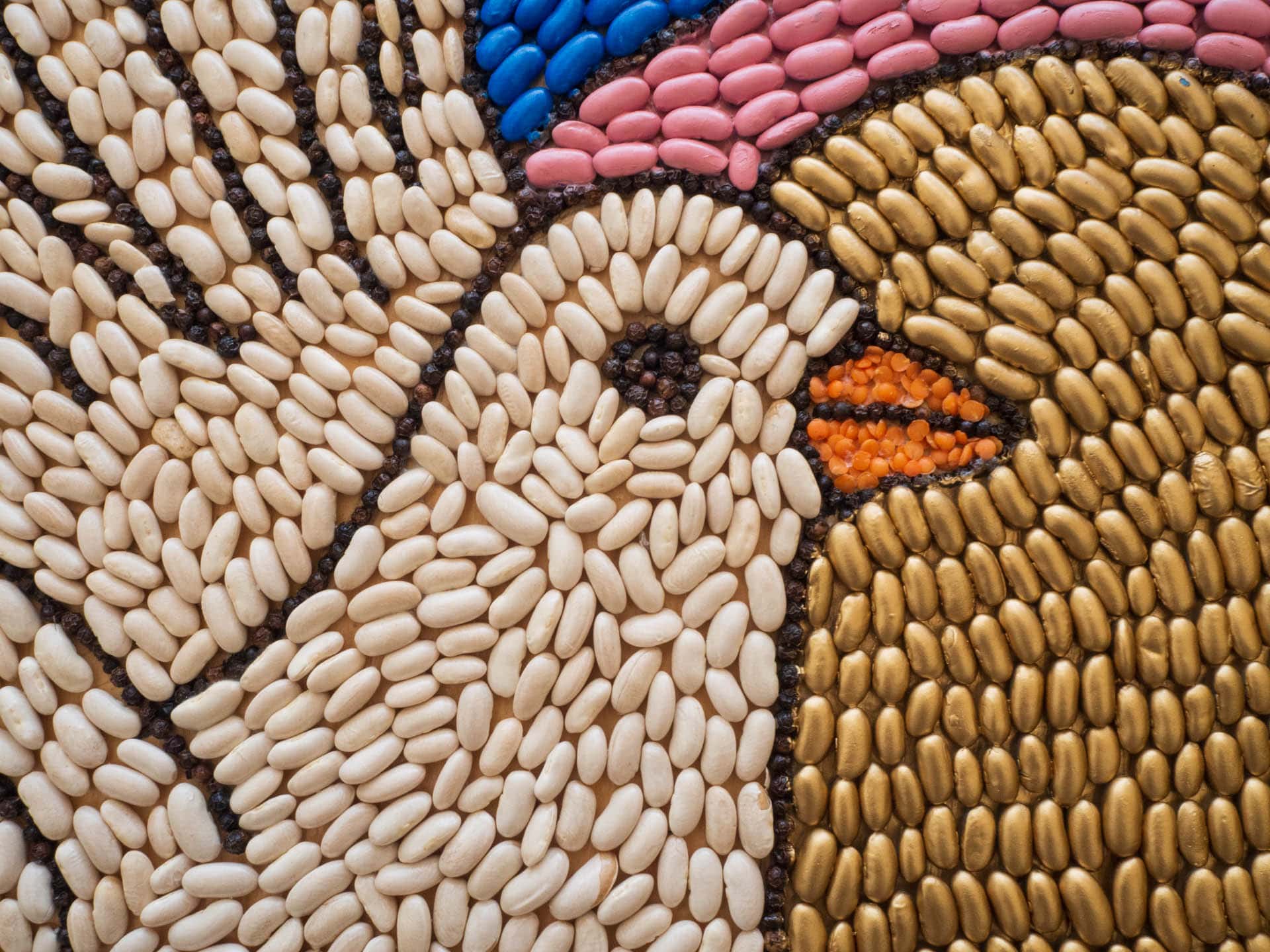

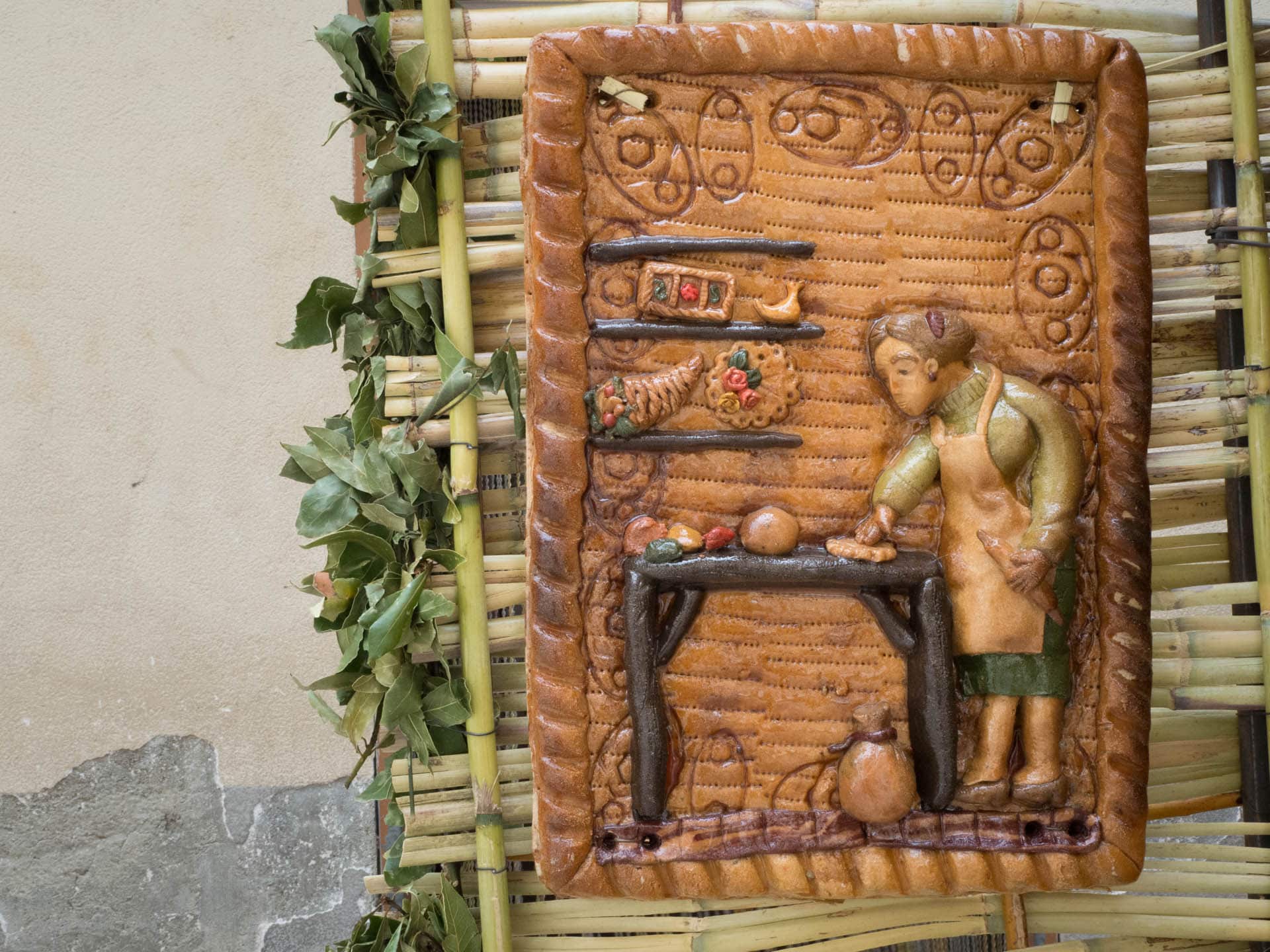
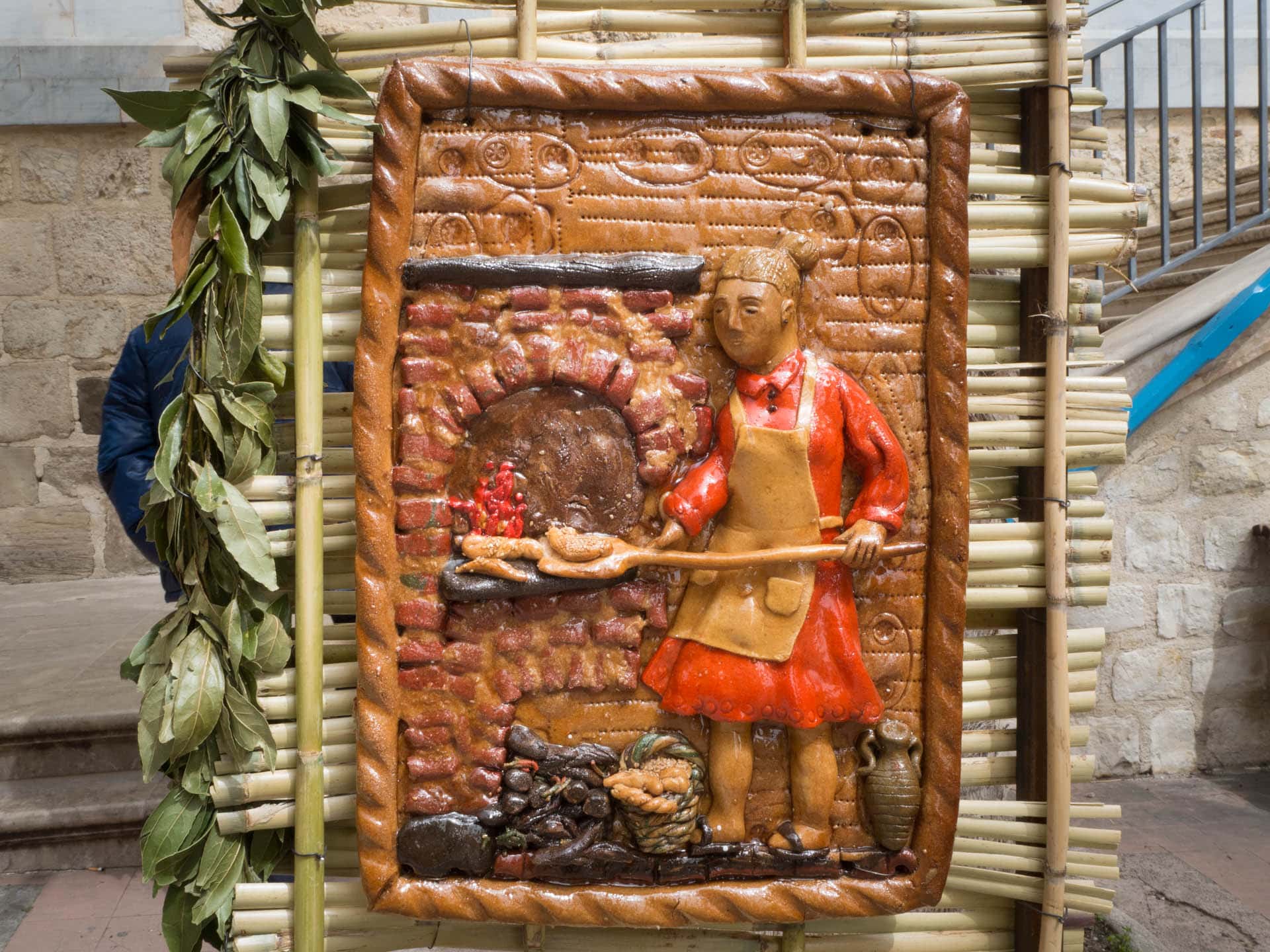


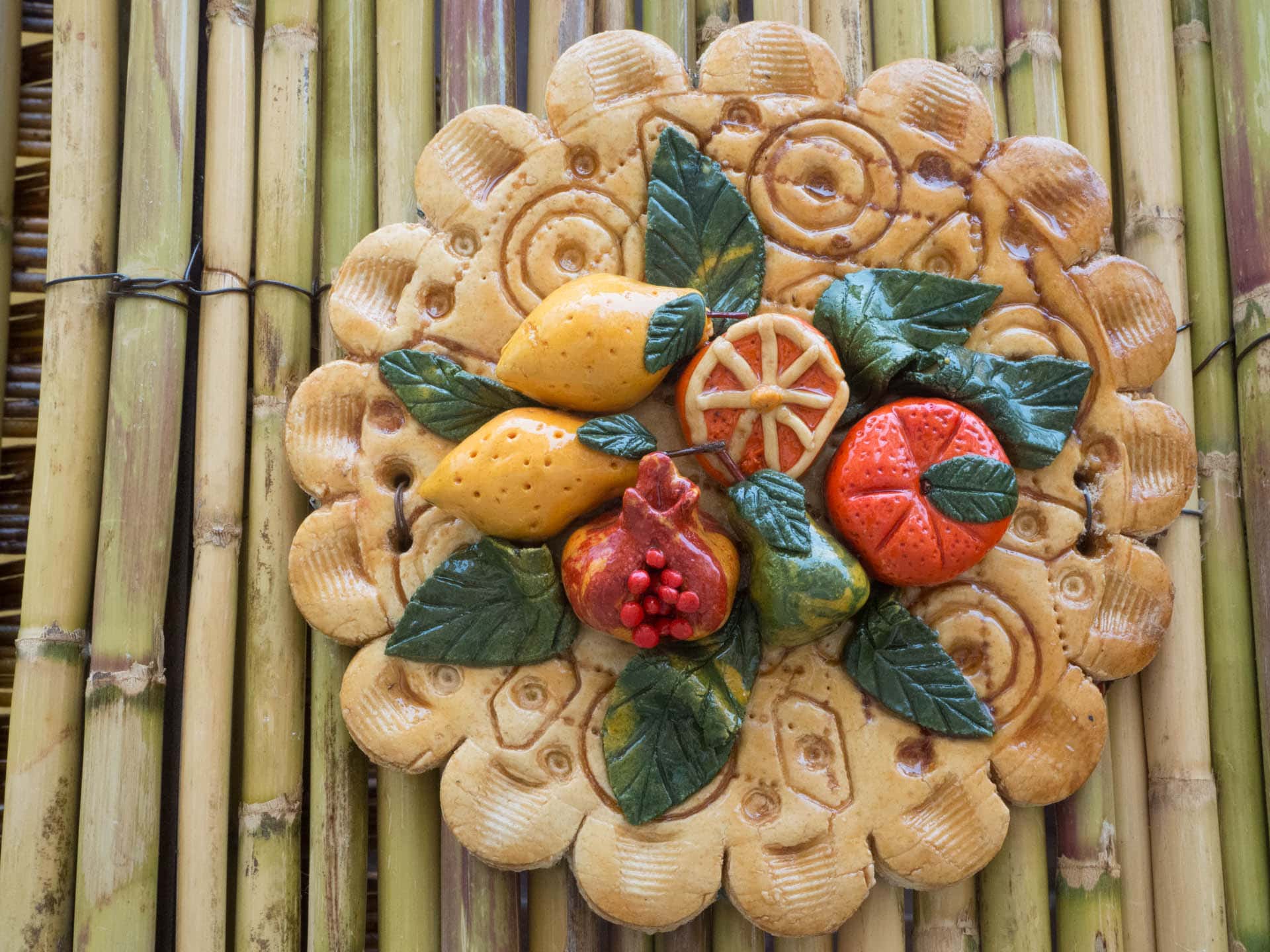
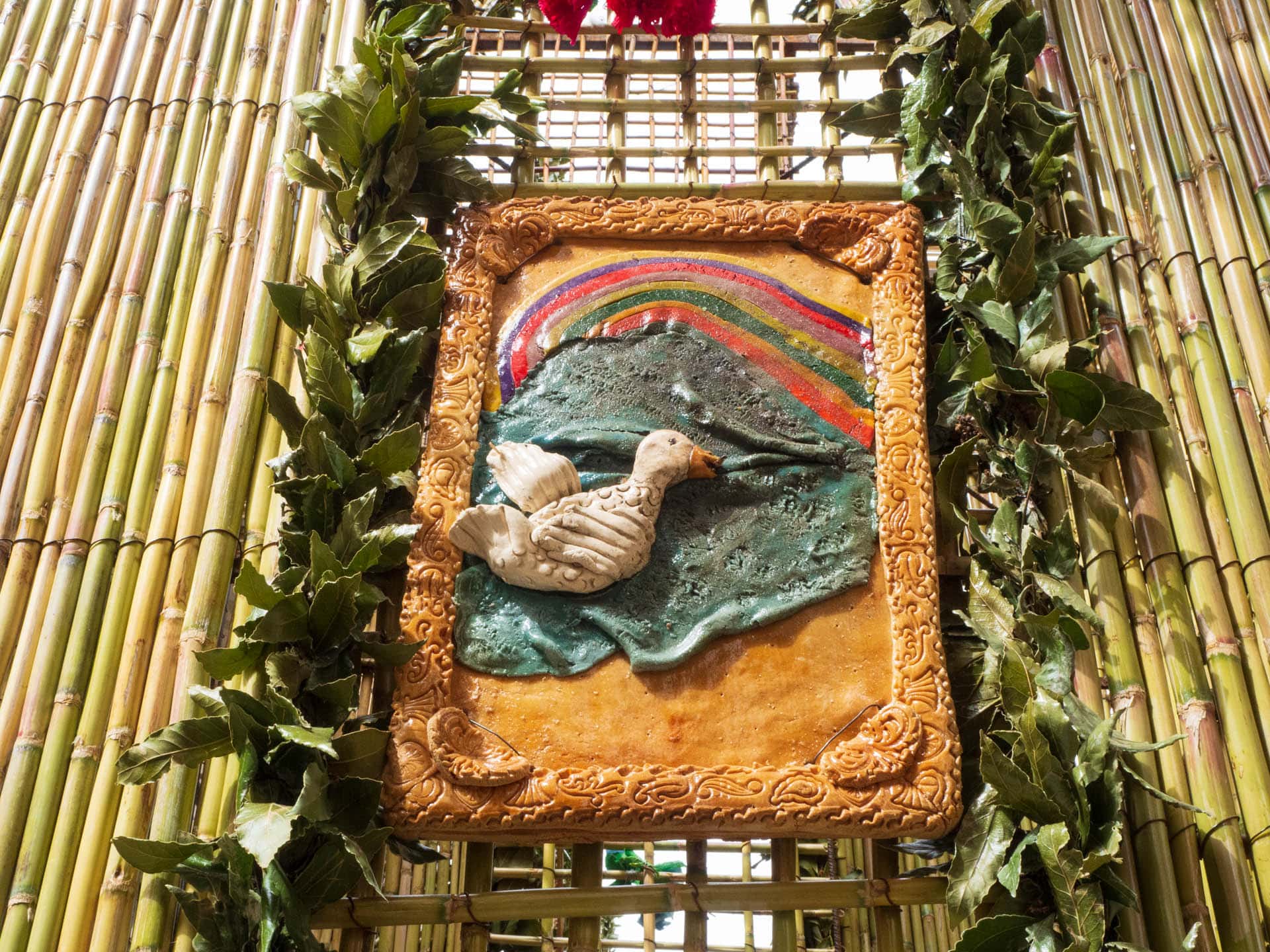
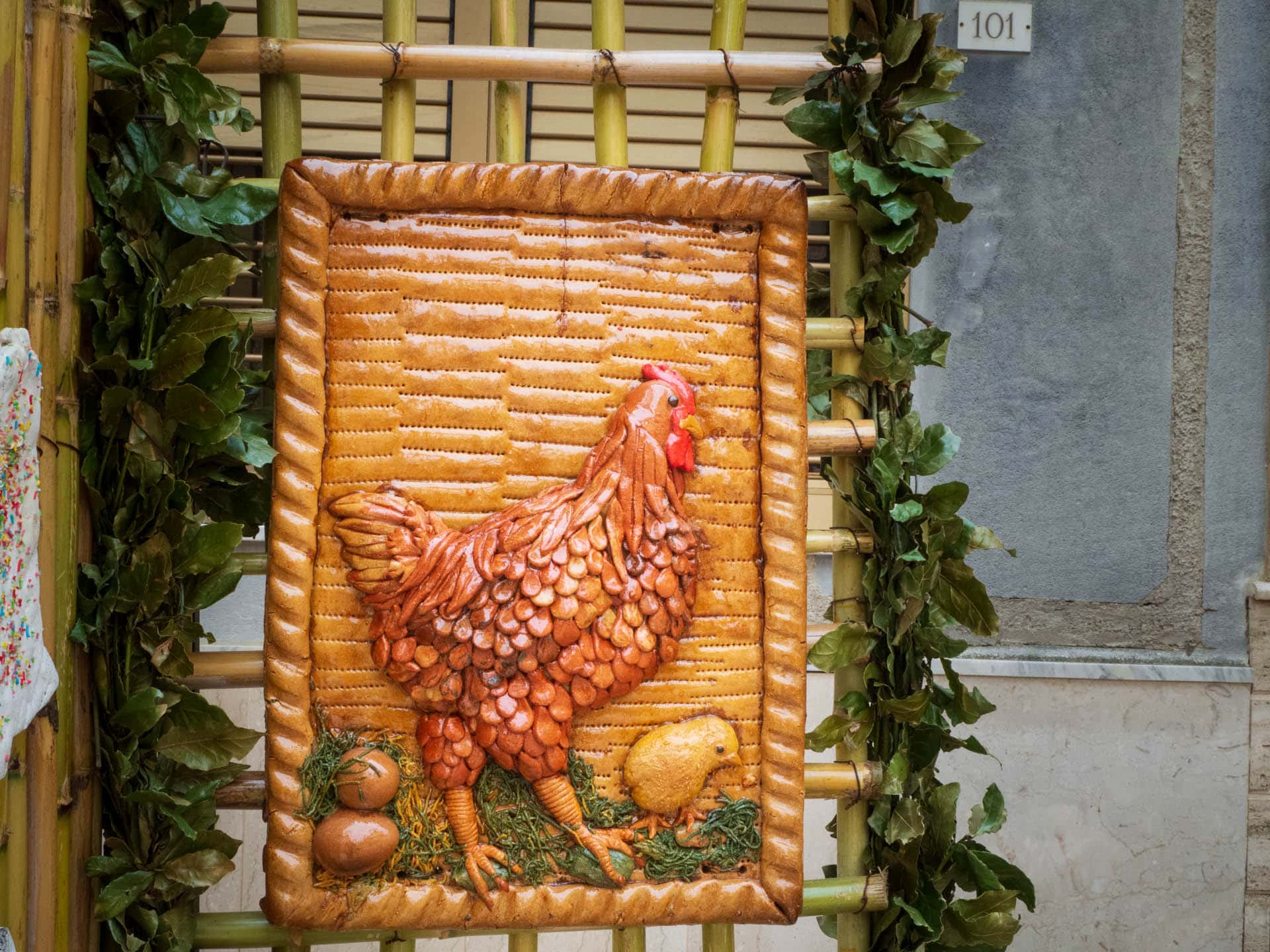



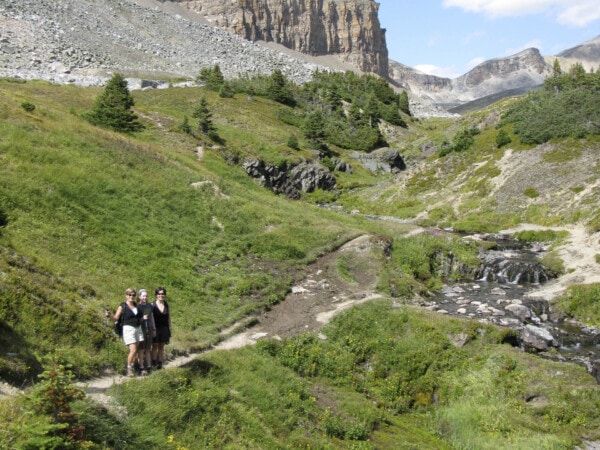

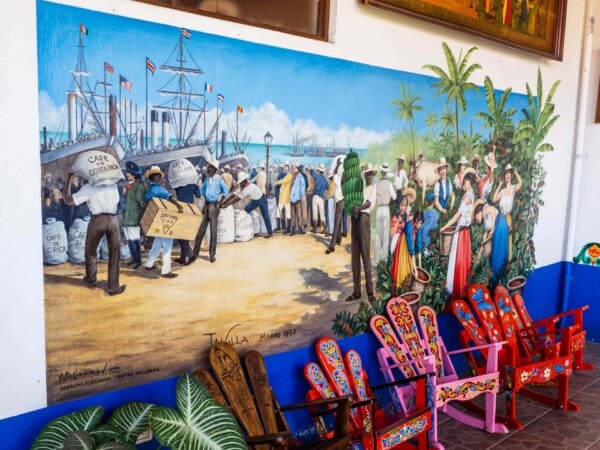
8 Responses
The design were so intricate. My favorite is Bean There. The dove bird
It’s quite amazing what the have accomplished with seeds, beans and grains isn’t it?
So Easter Sunday, nice walk along the Gorge in the sunshine, watching the little neighbour boy, Brandon and some other family kids doing an easter hunt, outside. So cute..I tried making hot cross buns once, now just buy and devour them! Love them..Hopoe everyones Easter is what they expected it to be, love the theme this week, thanks, Heather
How good does it get: hot cross buns, watching Canada in the World Curling Finals, seeing Bianca Andreescu in the Women’s Tennis Final in Miami and lamb in the oven.
What an amazing tradition! So intricate. Watching the video, I presume they don’t get huge winds?
Happy Easter!
Here’s what Google says about wind in the town: “The windier part of the year lasts for 6.1 months, from November 2 to May 7, with average wind speeds of more than 14.7 kilometres per hour. The windiest day of the year is February 21, with an average hourly wind speed of 17.4 kilometres per hour.” So nothing like Saskatchewan.
Very creative….I have trouble creating a decent bun roll!
I’m a bun dunce. Ha, ha. Puns, the lowest form of humour, like my bread making, the lowest level of my baking repertoire.